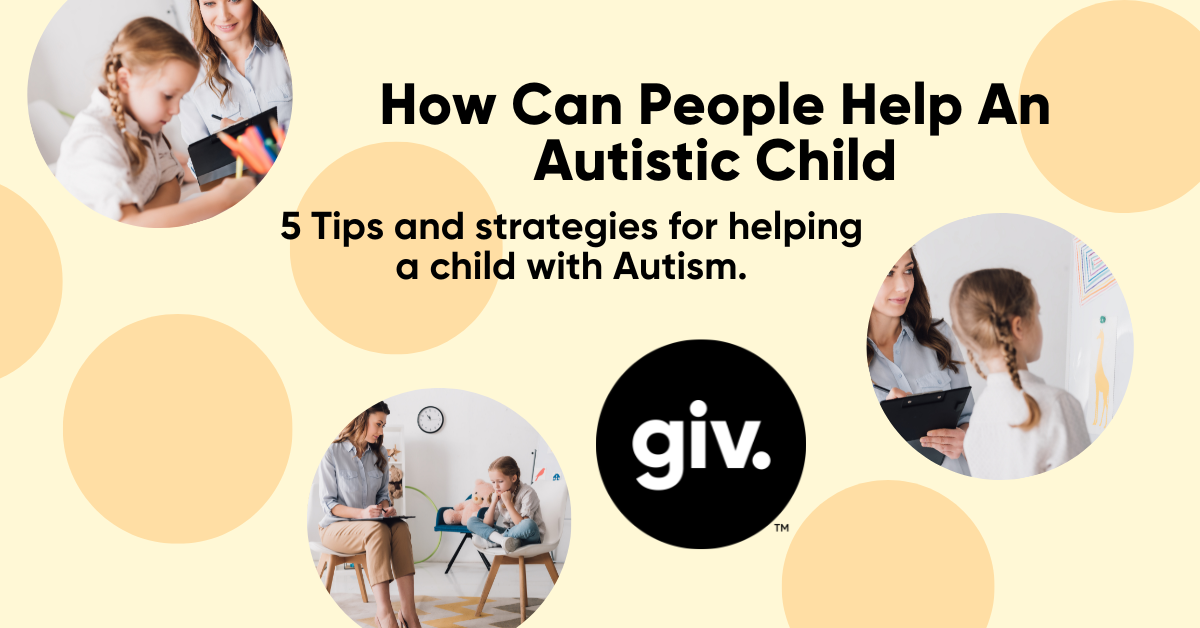Caring for an autistic child can be a fulfilling yet challenging journey. At Giv.care, we understand that many families and caregivers seek guidance on how they can help an autistic child thrive. Autism, a spectrum disorder, manifests differently in each child. However, by gaining a deeper understanding of autism and employing effective strategies, people can create a nurturing environment, promote communication, develop social skills, and collaborate with professionals to provide the best possible care.
How Can People Help an Autistic Child
Supporting an autistic child begins with empathy and understanding. Recognize that autism is a unique part of who they are, not a mere phase. It’s about adapting to their world, rather than trying to fit them into ours. Creating a supportive environment is key. Simple adjustments like sensory-friendly spaces and structured routines can make a world of difference. Effective communication involves patience and clear, concise language, possibly complemented by visual aids. Building social skills takes time and gentle encouragement, embracing their unique way of connecting with others. Finally, collaborating with professionals and connecting with a community of caregivers can provide invaluable insights and resources on this remarkable journey. Together, we can help autistic children thrive.

Understanding Autism
To help an autistic child, it’s crucial to start by comprehending autism itself. Autism spectrum disorder (ASD) is a neurological condition that affects a person’s social interaction, communication, interests, and behavior. Children with autism may display a wide range of symptoms, from sensory sensitivities to repetitive behaviors.
One must recognize that autism is a lifelong condition, and there’s no one-size-fits-all approach to support. It’s essential to approach each autistic child as an individual with unique needs and strengths. Understanding that autism is not a choice or a phase but a fundamental aspect of who the child is can lay the foundation for effective assistance.
Creating a Supportive Environment
Creating a supportive environment is key to helping an autistic child flourish. Autistic children often experience sensory sensitivities that can be overwhelming. To address this, consider making sensory-friendly adjustments to their surroundings. This could involve soft lighting, noise-cancelling headphones, or introducing comforting textures.
Routine and structure are also paramount. Autistic children often find comfort in predictability. Establishing a consistent daily schedule can provide a sense of security. Visual schedules or charts can be used to help the child understand and anticipate their day.

Effective Communication
Effective communication lies at the heart of assisting an autistic child. Many autistic children may have difficulty with verbal communication or understanding social cues. It’s essential to be patient and employ clear, concise language. Using visual supports, like picture cards or visual schedules, can aid in communication.
Non-verbal cues are equally important. Pay attention to the child’s body language and facial expressions. They may use alternative methods of communication such as sign language or augmentative communication devices. Being receptive to these forms of expression can greatly enhance interaction.
Building Social Skills
Developing social skills is a crucial aspect of helping an autistic child. While social interaction may be challenging, it’s essential for their overall development. Encourage social engagement by creating opportunities for interaction with peers or family members.
Structured playdates or activities that align with the child’s interests can facilitate social interaction. Teach them about emotions and perspective-taking, helping them understand the feelings of others. Patience and understanding are key when it comes to the gradual development of these skills.
Collaborating with Professionals
Collaboration with professionals is a significant step in the journey of helping an autistic child. There are various specialists and therapists who can provide valuable support. Seeking out a diagnosis and early intervention services is crucial. These professionals can develop tailored strategies to address the child’s specific needs.
In addition to specialized therapies, joining support groups or networks of parents and caregivers can be immensely beneficial. These communities can provide emotional support, share experiences, and offer practical advice.

In conclusion, helping an autistic child involves a multi-faceted approach that begins with understanding the nature of autism itself. Creating a nurturing environment, fostering effective communication, and building social skills are essential components of this journey. Collaborating with professionals and seeking support from others who have faced similar challenges can provide the guidance and encouragement needed to help an autistic child reach their full potential. At Giv.care, we are committed to assisting families and caregivers in providing the best care possible for autistic children. Together, we can make a positive difference in the lives of these incredible individuals.






